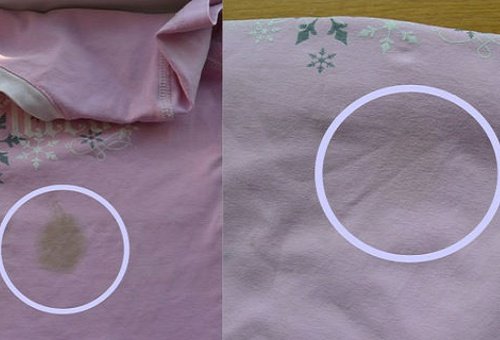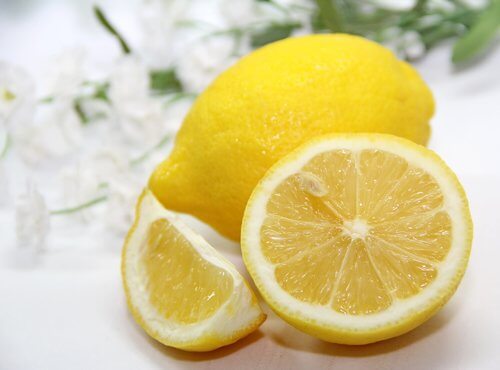Make Your Own Homemade Stain Remover

Clothing is always vulnerable to staining, even while it’s in the wash. Regardless of the cause of the stain, they can be difficult to eliminate completely. You almost always have to resort to various cleaning products that could damage the fabric itself. We have the option of purchasing a product from our local shop, or we could attempt to make our own homemade stain remover.
Nowadays there are lots of options for stain removal on the market. However, they’re usually full of chemicals that can harm both your health and the environment.
Today, lots of people are looking for ecological alternatives to wash their clothes and eliminate stains. Such alternatives are safe, effective, inexpensive, and easy to obtain. If you haven’t yet tried a homemade stain remover, we invite you to learn more in the following article about how to make a few at home. In that way you’ll be able to stop using those expensive products that can cause so much damage to the earth and your health.
Baking soda homemade stain remover

- Sweat or vomit stains. If your clothing is stained with either sweat or vomit, all you need to do is mix six tablespoons of baking soda with half a cup of warm water, and apply it directly to the stained region. Let it sit for 15 minutes, and then rinse with warm water. If the stain doesn’t come out on the first try, repeat this procedure and then wash the garment as usual.
- Grease stains. Grease stains can be a real headache because oils tend to adhere to the fibers of the fabric. Baking soda is a great way to get these out because it absorbs the oil. To use this remedy you need to sprinkle baking soda directly onto the affected region, let it sit for half an hour, scrub gently and then rinse.
Read more: Five Green Formulas to Degrease Kitchen Furniture
Vinegar stain remover
Vinegar is one of the best natural cleaning products you can find. This common kitchen ingredient is a powerful stain remover, both from clothing as well as other surfaces like carpet, flooring, and furniture.
- General stains: To remove stains from clothing or another surface, mix half a cup of vinegar with a quart of warm water and one quarter cup of baking soda. Apply this mixture directly to the stain and let it sit for 15 minutes before rinsing.
- Mold stains: Vinegar is also very good for removing stains from mildew. In this case, mix equal parts of vinegar and salt and apply it to the stain.
Lemon and salt stain remover

- Dark stains: Mix a quarter cup of lemon juice, several tablespoons of salt, and a half cup of warm water in a bowl. Apply this mixture directly to the stain for 10 minutes before rinsing with warm water.
Cornstarch and talc stain remover
Cornstarch and talc work together to become an effective homemade stain remover that’s ideal for getting dark spots, like wine stains, out of clothing.
- Red wine stains: To eliminate these tough stains, mix equal parts cornstarch and talc and apply it to the stain as a paste. Leave it on for 15 minutes before rinsing with warm water. If necessary, repeat the above steps.
Egg yolk stain remover
This stain treatment using egg yolk is especially great for removing coffee stains.
- Coffee stains: Mix one egg yolk with a half cup of warm water and apply it directly to coffee-stained clothing. Leave it on for 20 minutes before rinsing the garment with lukewarm water.
All cited sources were thoroughly reviewed by our team to ensure their quality, reliability, currency, and validity. The bibliography of this article was considered reliable and of academic or scientific accuracy.
- Cleaning Supplies and Household Chemicals. (2022). American Lung Association. Recuperado el 29 de marzo del 2023 en: https://www.lung.org/clean-air/at-home/indoor-air-pollutants/cleaning-supplies-household
- Gerster F., Vernez D., Wild PP., Hopf NB. (2014). Hazardous substances in frequently used professional cleaning products. Int J Occup Environ Health, 20(1):46-60. Recuperado de: https://www.ncbi.nlm.nih.gov/pmc/articles/PMC4096065/
- Turner P. (2017) Cleaning Healthy. Cleaning Green. (2017). University of Georgia. Recuperado el 29 de marzo del 2023 en: https://extension.uga.edu/publications/detail.html?number=C1114&title=Cleaning%20Healthy,%20Cleaning%20Green
- Washburn C. (2009). Home Cleaning Chemistry. Utah State University. Recuperado el 29 de marzo del 2023 en: https://extension.usu.edu/archive/home-cleaning-chemicals
This text is provided for informational purposes only and does not replace consultation with a professional. If in doubt, consult your specialist.








